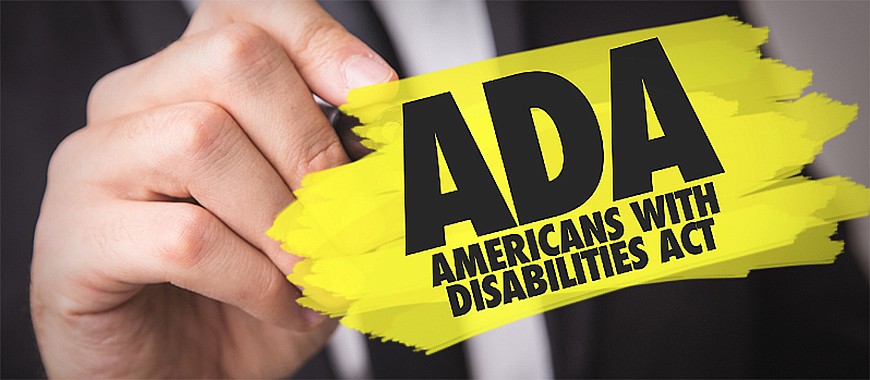- July 4, 2025
-
-
Loading

Loading

I did it to myself.
Or, rather, I should say I elected to have it done to me.
On Nov. 14, I had foot surgery to correct my hereditary hallux valgus, a name that sounds as gross as the condition it describes looks: I had a bad bunion.
As a fit, athletic 37-year-old, I believed I would be the model patient. I would wow the surgeon and physical therapists with my healing prowess and speedy recovery after surgery.
It didn’t quite work out like that.
Five weeks post-op, I was still on my knee scooter, beholden to my red set of wheels equipped with a handy bicycle bell as my primary method of transportation.
It’s fair to say I underestimated my recovery time.
But it was a humbling lesson; there’s a lot to be learned from behind the handlebars of a scooter.
To begin, it was exhausting. It took me twice as long to get ready to do anything or to go anywhere. Sure, I had mastered the art of loading and unloading my trusty red steed from the backseat of my sedan fairly well, but just the act of getting myself situated and ready to roll was tiring.
I had contraptions to help me transport everything from coffee cups to my computer. Utility trumped style as a backpack and sneakers became my go-to accessories. I stopped drinking as much water during the day because the mere act of getting to the bathroom was a hassle. Every task, from feeding myself to getting dressed, required extra steps, planning and more energy than it ever had.
I quickly realized all the things my able-bodied self had taken for granted. Which left me to wonder: How do people who live with these conditions permanently do it?
I’m in awe of them, truly. They have a toughness I can’t even fathom.
But I also discovered they have one giant ally: the Americans with Disabilities Act.
I was 9 when it was signed into law July 26, 1990, so what to do during summer break was more on my mind than how the disabled are treated. But once you scoot a block or two, you suddenly learn all kinds of things that were hiding in plain sight.
The first day back at work was my first eye-opener. I realized my normal path to the office involved about six stairs from the parking garage to the door — six stairs I couldn’t navigate. My new path became taking the elevator to the first floor, where I could scoot to the front of the building and take another elevator up to the newsroom. An inconvenience, but I could get there.
I learned there’s a litany of proverbial speed bumps in the life of the disabled: Heavy doors that seem impossible to open, paths that lead to stairs with no mention of the accessible entrance, the inability to have free hands to hold something while you go somewhere. All challenges to be surmounted.
But I knew that nearly everywhere I went, thanks to the Americans with Disabilities Act, there would be some way of getting me where I wanted to go. I really can’t imagine a world where that wasn’t true, where you were stranded with your disability, without a path forward. Yet this was true only 30 years ago.
Throughout my years as a journalist, I’ve seen the clash that comes between ADA requirements and business or property owners who are trying to comply. Things like elevators can be prohibitively costly to retrofit into older buildings. Carving out extra space for accessible bathrooms or handicap parking spaces can take away from other amenities. It can lead to some feeling like the regulations are onerous and costly, forcing the majority to accommodate what is the relatively few.
In his comments on the ADA’s signing day, President George H.W. Bush stated that it was about civil rights, equality and most important, freedom and liberty, for all Americans, not just able-bodied ones.
Thirty years doesn’t seem like that long ago, but this was forward-thinking legislation in more ways than one. Not only was it the world’s first comprehensive declaration of equality for people with disabilities, as Bush said in his speech, but it would lay the foundation for accommodations and accessibility that will be lifelines for a growing number of our aging population in the next 10 years.
At the time, Bush said it would benefit the 43 million Americans living with disabilities. In 2010, that number was 56.7 million, according to the U.S. Census Bureau. And as the baby boomer generation ages, more than 78 million people in our country will be over 65, according to Lex Frieden, a noted researcher and disability rights activist. Of those, more than half will have disabilities.
That means by 2030, we will have more nearly 95 million people with disabilities in the United States. Based on the Census Bureau’s population projections, that means more than 25% our projected 360 million residents will have a disability. Suddenly, regulations that seemed to benefit the few will be used by a quarter of our population, and probably more in our area.
So the next time you see an effort to accommodate the disabled, be grateful. And the next time you see someone hobbling, wheeling or scooting in your way, be nice.
It will likely be you someday.